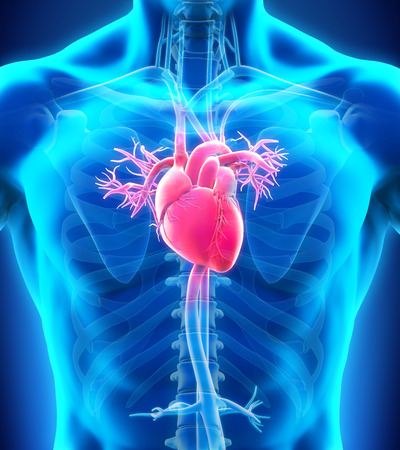The Center of it All – Your Heart
Are you having trouble getting motivated for your next workout? Let’s help you with that by introducing you to a very scary fact. The leading cause of death in the United States in 2016 was cardiovascular disease – 614, 348 deaths.
Generally, cardiovascular disease (CD) is thought of as a man’s affliction. However, per the American Heart Association, about 45% of all female deaths occur due to some form of CD. Although roughly 28% of men die within one year after a serious heart attack, almost double that amount of women, 45% die from the same cause.
As you may have guessed, your exercise regimen is a significant combatant to this disease, i.e., exercise is an important first step in CD prevention. But, exercise is not enough, you need to educate yourself about what CD is and how it affects your body. Although modern medicine can successfully diagnose, treat, and often cure a wide variety of diseases, it really is up to you to take the first step.
Advertisement: American Heart Association (click on photo for more info)

The primary step is like that of fitness – take control of your nutrition, along with your personal habits and medical care.
What is cardiovascular disease?
The definition of cardiovascular disease is used such that it is an umbrella term that is used to identify a host of diseases that affect not only your heart, but your circulatory system as well. You are likely familiar with the more common ones, which include:
- Angina – a pain or discomfort in the chest;
- Atherosclerosis – the build-up of plaque on the inner walls of the arteries.
- Coronary Heart Disease – CHD affects the coronary arteries in the heart and is the most frequently occurring form of heart disease;
- Heart failure – this one develops slowly
- High Blood Pressure or Hypertension – this form of CD is called the silent killer, which is the excessive force of blood pumped by the heart against the walls of blood vessels and sadly is an ailment for a great many people; and
- Stroke – a lack of blood flow to the brain (this is a very serious health problem that can leave your partially paralyzed or worse);
It’s difficult sometimes to determine the cause of some of the above, but two issues seem to be the major cause. For example, smoking is a significant risk factor that appears to be a catalyst for CD. Smoking accelerates the oxidation of the cholesterol in your bloodstream so that it is deposited onto the walls of blood vessels at a faster rate. Thus, rather than the cholesterol being deposited a piece at a time as an image, it’s like spray painting a section of your arteries at a time. Women who smoke suffer more severe consequences than men.
Advertisement: National Geographic (click on photo for more info)

Another major factor contributing to CD is obesity. Are you overweight or severely overweight? This can be a problem, which, as you guessed, can also be helped by a good exercise program. Obesity can help facilitate the onset of type II diabetes in adults. As compared to smoking, a woman with diabetes is at much greater risk than a man for developing complication from CD. Examples include stroke, congestive heart failure, other cardiovascular problems, and peripheral vascular disease. Compared to men, women that have diabetes are at an increased risk of having heart attacks so, pump the iron, hit the trail, or get on those treadmills ladies. Following a heart attack, women are also at risk for performing poorly during procedures such as bypass surgery and angioplasty. Don’t get caught on the short end of the stick with this problem because it is potentially deadly.
High blood pressure is another contributing factor in cardiovascular disease because it’s part of the metabolic syndrome (raised blood pressure, abdominal obesity, insulin resistance). Again, women must be more aware of the importance of monitoring their blood pressure and maintaining a more regimented contact with their doctors to ensure they are taking any proper medications and doing all the risk reduction strategies that will help keep their high blood pressure under control.
A very important factor is your state of mind so, relieve stress as much as you can. Although cholesterol and smoking may not be independent factors of this problem, stress and depression are often significant contributors to developing coronary artery disease. Depression is a very real enemy because people who are depressed have an increased risk of both a first cardiac event and subsequent ones and are more likely to die sooner, as well as to suffer further cardiovascular complications.
Advertisement: WebMD (click on photo for more info)

How to Reduce the Risk of Cardiovascular Disease
The best way is one of our missions – you must develop an exercise program and maintain it because your life may depend on it. Exercise is extremely important in this issue. Thirty minutes a day is what is required in the gym, on the trail, or wherever you may workout. This amount of time will not give you the body of a fine-tuned athlete, but it can keep the enemy outside the gates. And, you can even break down the exercise time into 2-3 different segment to make up the total 30 minutes. Your major goal is to make sure you do your exercises.
The key to all of this is to educate yourself about the risk factors involved and the importance of them. This will help you plan risk-reduction strategies that will help you. Following your education, you need to implement preventive maintenance – see your doctor regularly and exercise daily. In a nutshell, keep your cholesterol in check, keep your blood pressure under control, watch your diet, and exercise!







